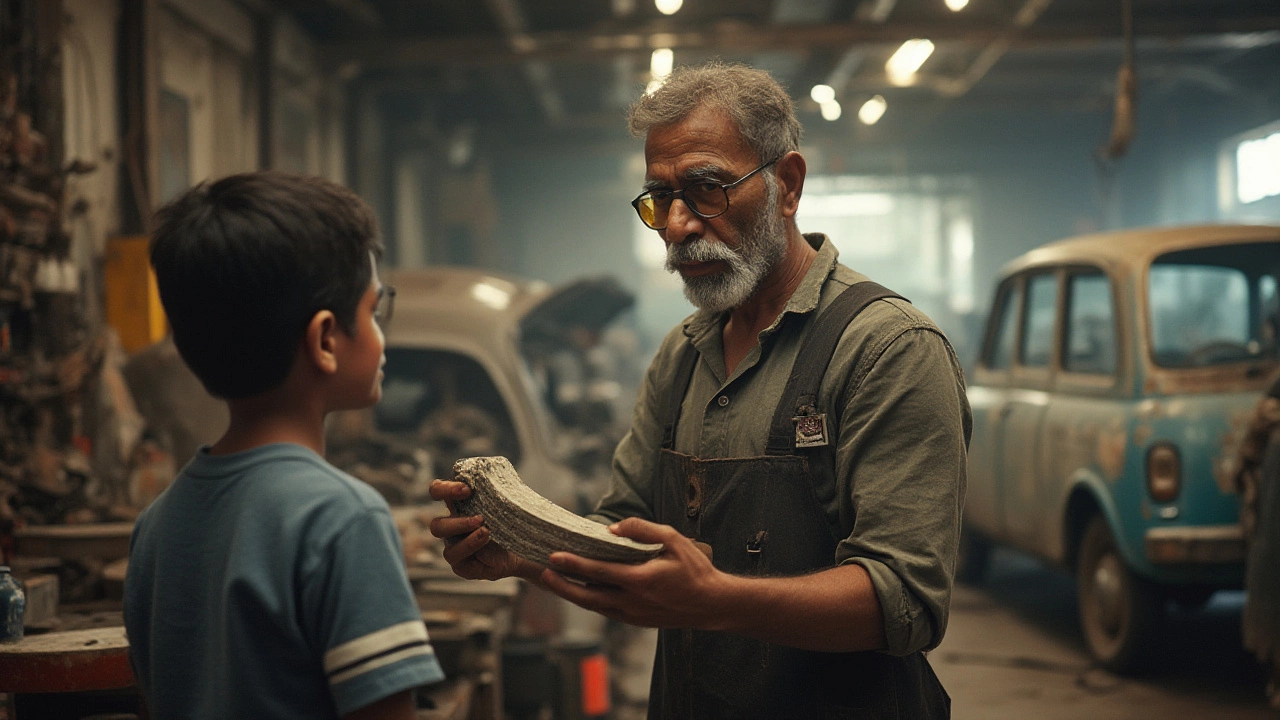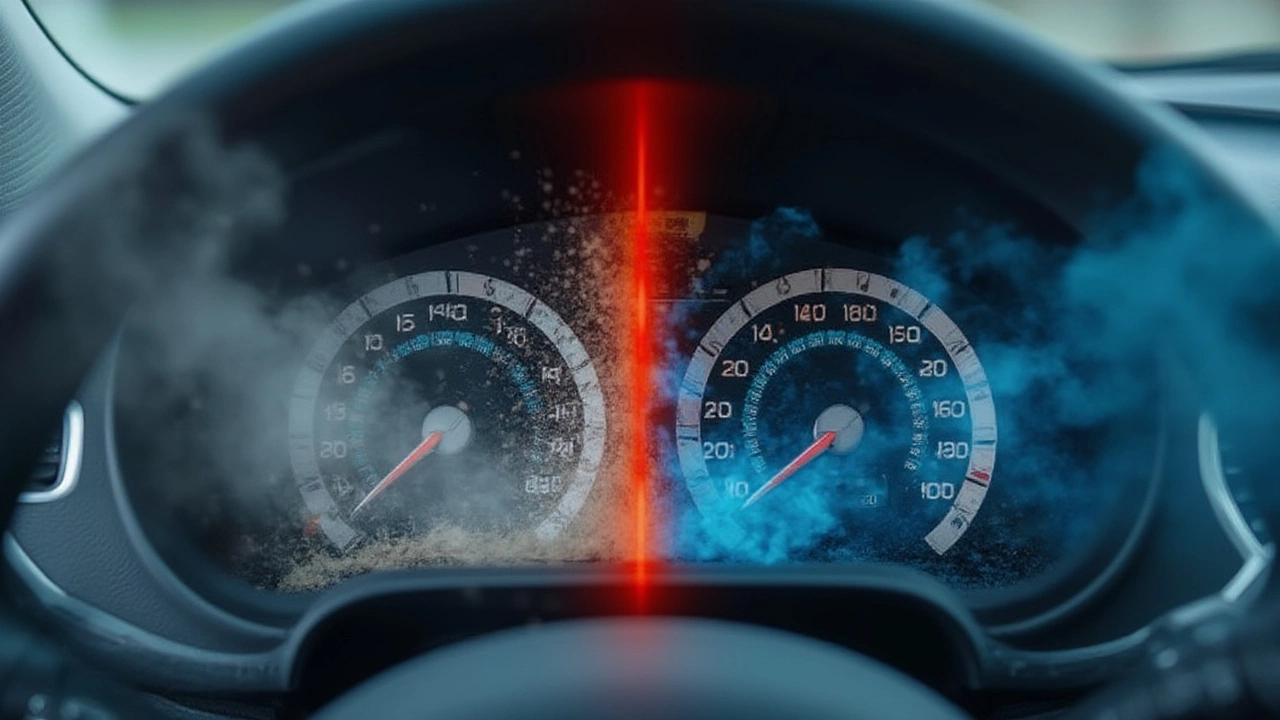 Jul, 15 2025
Jul, 15 2025
Imagine asking your car to run a marathon with a sock stuffed in its mouth. That’s what happens every time you head out with a dirty air filter—your car strains, coughs, and starts throwing subtle (and not-so-subtle) tantrums. Folks easily overlook this maintenance step, but research from the Car Care Council says almost one in four vehicles on the road have a clogged air filter. That adds up to sluggish acceleration, wasted fuel, and even engine damage you could have dodged if you’d just listened to your car’s early warning system.
How a Car Air Filter Works and Why It Matters
Your car inhales more air than you might think. For every gallon of fuel your engine burns, it chews through on average 12,000 gallons of air. That air isn’t always as fresh as a mountain breeze, either. If you drive in the city, you get a daily blend of dust, dirt, pollen, bugs, and even microscopic brake dust particles. Rural roads kick up sand and bits of rotting leaves. The air filter’s job is simple—it grabs the bad stuff before it hits your engine’s sensitive internals.
Ever look at a white furnace filter a few months after new installation? Nasty, right? Now picture that gunk inside your engine. Clogged air filters force your engine to work harder to gulp air; fuel economy dips and the ‘oomph’ you expect when you hit the gas pedal just isn’t there. Without clean air, combustion inside your cylinders becomes inefficient, sometimes so much that you can smell unburned gas or even see the smoke. EPA tests from the early 2000s estimate a dirty filter can drop mileage by 6%—which may not sound like much, but it bites your wallet after a year of driving.
Modern filters are made of pleated paper or cotton, jammed into a plasticky housing. Over time, dirt builds up in those paper pleats. Air can’t pass through as easily—so your engine starves. It’s not always visible to the eye, especially on newer vehicles with sealed boxes, but even microscopic debris adds up.
Dead Giveaways: The Symptoms Your Air Filter Needs Attention
So, how do you spot a dirty air filter before it causes trouble? Watch for these clear signals:
- Weak acceleration: You’ll notice this especially during highway merging or passing. Press on the gas and there’s a hesitation or flat, uninspired response. Car & Driver magazine once tested a car on a dyno with a clogged air filter and saw a power drop of 11%. That’s the difference between zipping past that truck—or not.
- Noticeably worse gas mileage: If you’re filling up more than usual but driving the same routes, your filter might be the culprit.
- Odd engine sounds: Is it idling roughly, making unusual sputters or coughing when you accelerate? That air-starved engine can sound like it’s struggling for breath.
- Check Engine Light: Some newer cars have airflow sensors behind the filter. If the engine computer sees a big enough change in air volume, you’ll get that dreaded orange warning light.
- Dark exhaust smoke: If you see black smoke puffing from the tailpipe when you start the car or gun the engine, your combustion isn’t complete, likely because of too little air.
- Strong smell of gasoline: With less air mixing with fuel, some gasoline isn’t fully burned—so you may catch a whiff.
For a quick visual test: If you can access your air filter, just hold it up to the light. If you can’t see any light filtering through the pleats, it’s time for a change. But don’t just go by looks alone—a filter can get clogged before it looks filthy.

Real-World Consequences of Ignoring a Dirty Air Filter
The most annoying part about a clogged air filter isn’t just that your car doesn’t hum along like you want—it’s the surprise repair bills down the line. That thin shield isn’t just protecting you from minor annoyances. Dirty air filters can cause:
- Shortened engine life: Dust and grit get past the filter and scratch up pistons and cylinders. That’s how you chew through an engine way before its time.
- Malfunctioning sensors: Mass air flow sensors are super sensitive. If they get dirty, your car’s computer starts making fuel calculations that are way off.
- Damage to spark plugs: Inefficient combustion leaves carbon deposits that build up on spark plugs, leading to misfires and rough running.
- Wasted fuel: Data from the U.S. Department of Energy suggests that changing a dirty air filter can improve gas mileage—especially on older vehicles—with up to a 14% difference on carbureted engines.
- Failed emissions test: Many states require these for registration. A clogged filter can push your emissions just over the legal limit.
Here’s a quick comparison table to see how a clean vs dirty filter can stack up:
| Condition | Acceleration | Fuel Efficiency | Emissions |
|---|---|---|---|
| Clean Air Filter | Responsive | Optimized | Within legal limits |
| Dirty Air Filter | Poor, sluggish | 6%-14% lower | Higher risk of failure |
Often, it’s so easy to blame other things—bad gas, old oil, or just "getting used to it." But a tiny piece of folded paper makes a huge difference. That’s why it’s smart to spot symptoms early and take the quick five-minute step of inspection or replacement.
When to Change Your Air Filter (And How to Do It Right)
You’re probably wondering—so, how often should I swap out the air filter? There’s no one-size-fits-all answer. The typical rule for most cars is every 12,000 to 15,000 miles, but if you drive on dirt roads or in dusty areas, you might want to halve that. Check your owner’s manual for the official word for your specific ride. But in practice, enthusiasts recommend at least checking every oil change, especially if you notice any of the symptoms above.
Here’s an easy way to replace most air filters (it’s honestly easier than changing a lightbulb):
- Buy the correct filter (your owner’s manual or online parts database will help you match the code).
- Pop the hood. Locate the air filter housing—usually a black plastic box connected to a large air intake hose.
- Release the clips or screws (sometimes just a screwdriver is needed).
- Remove the old filter carefully—note which way it’s facing.
- Vacuum or wipe out any leaves or debris in the box.
- Drop in the new filter, making sure it sits flat and seals.
- Close up the box, make sure the clips or screws are tight, and you’re done.
Tip: If your car uses an oiled performance air filter, remember these can be cleaned and reused, but you need to follow the manufacturer’s cleaning/oiling instructions carefully. Using too much oil can actually foul sensors, leading to different headaches.

Pro Tips to Keep Your Engine Breathing Easy
Want to avoid the dirty-air-filter blues entirely? Here are some quick, real-world hacks from pros and weekend warriors alike:
- If you drive in heavy traffic or dusty areas (like near construction sites), check your air filter even more often.
- Pay attention to changes in your car’s performance—slow pickup or a weird-smelling exhaust isn’t "just age." It’s your car telling you it’s time for a check.
- Set a recurring calendar reminder to peek at your air filter every couple of oil changes. Out of sight, out of mind makes for expensive mistakes.
- Upgrade to a high-quality filter, especially if you live in a place with crazy pollen or fine dust. High-end filters may cost a few bucks more but catch smaller particles and last longer.
- Never ignore your check engine light if it comes on after a filter change. Recheck that the filter is installed properly, and double-check the mass air flow sensor connection.
- If you DIY, avoid using compressed air to “clean” a disposable paper filter—it can tear the filter fibers, letting dirt straight through.
Sticking with fresh filters isn't just about pampering your car—it's about keeping your engine running longer, smoother, and stronger without surprise bills. It's such a low-effort task with such high payoff. Next time you feel your car lag just a bit or spot a cloud of smoke in the rearview, take a look under the hood and spot that sneaky dirty air filter before it becomes a much bigger problem.